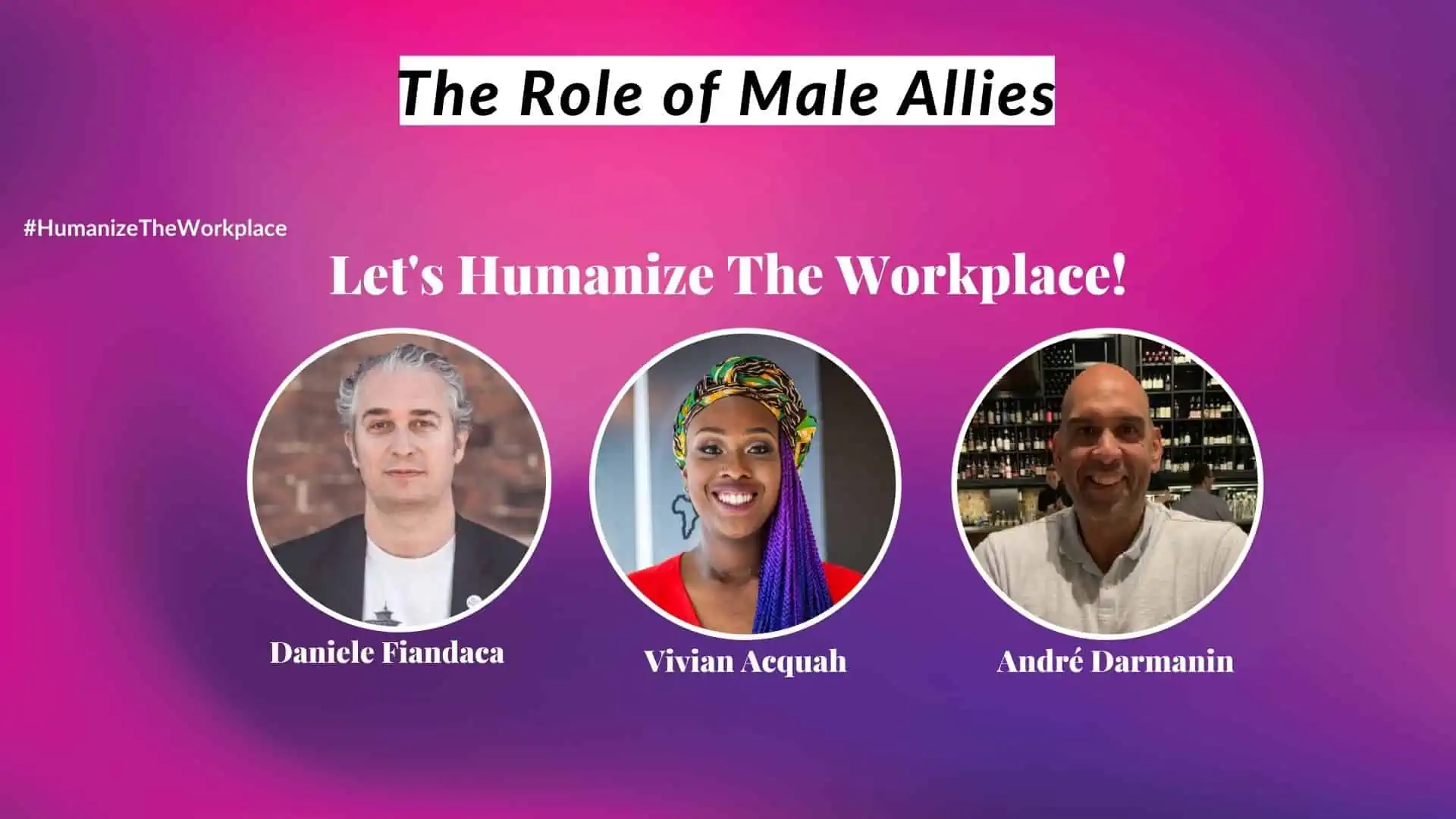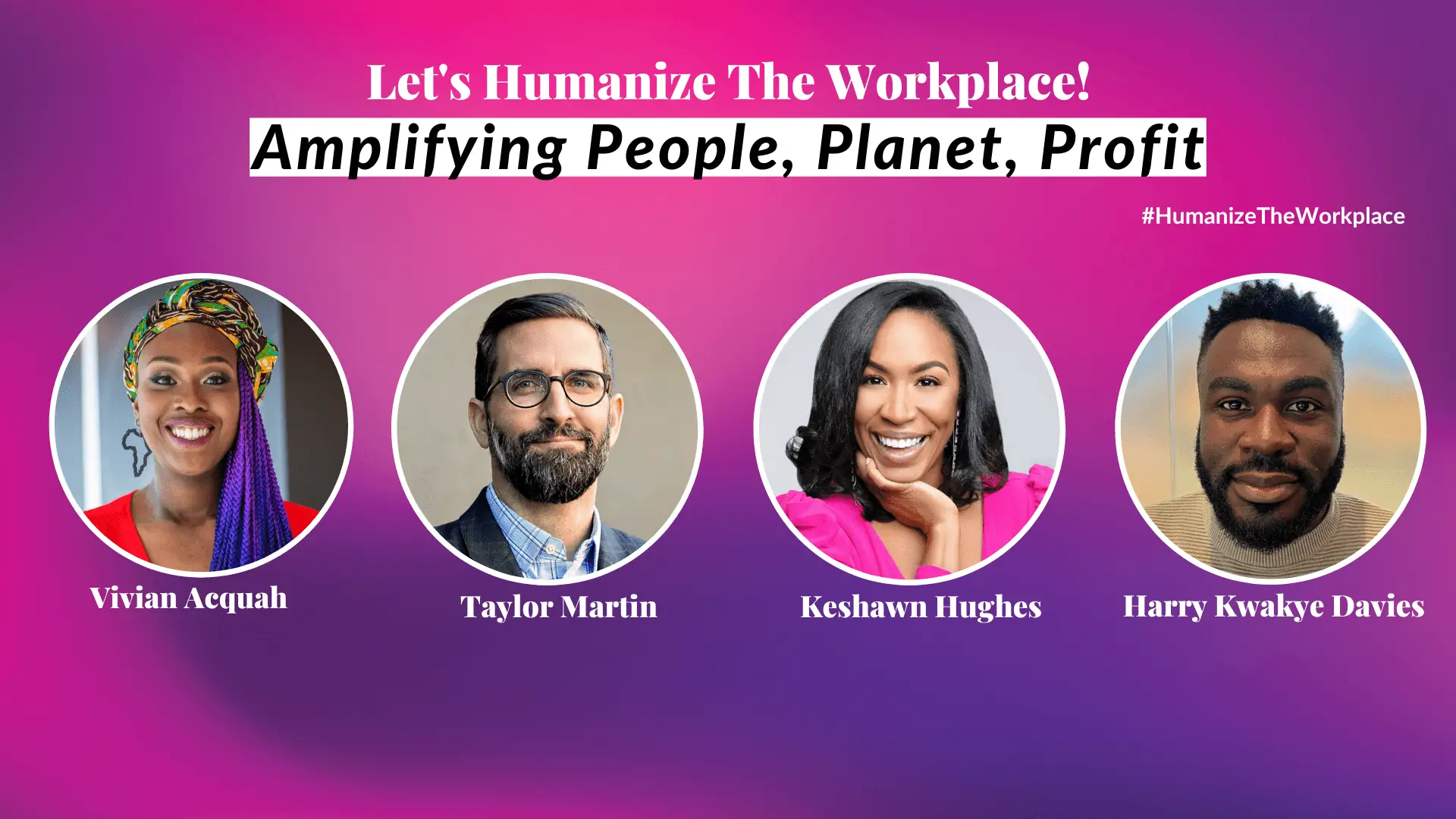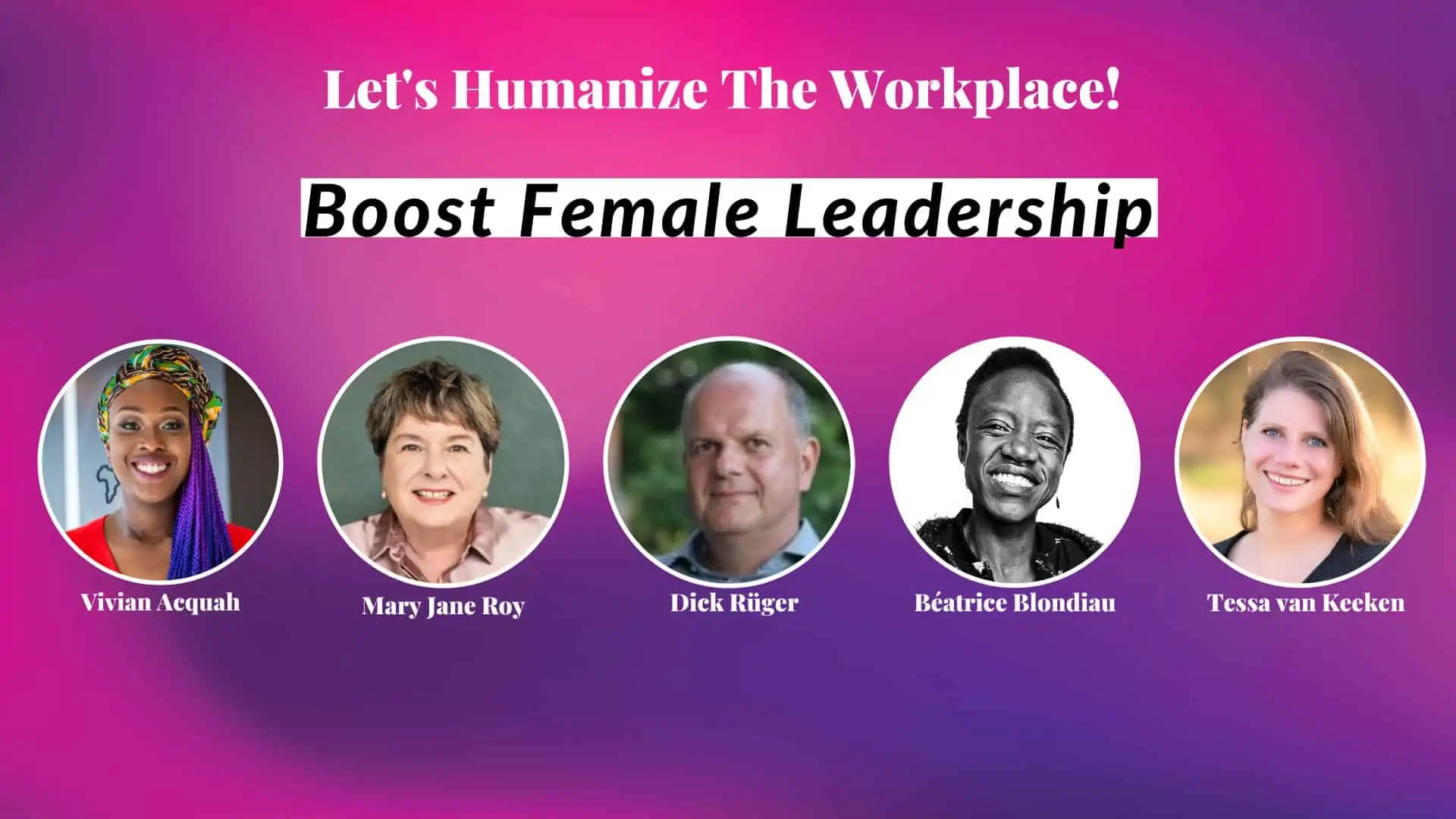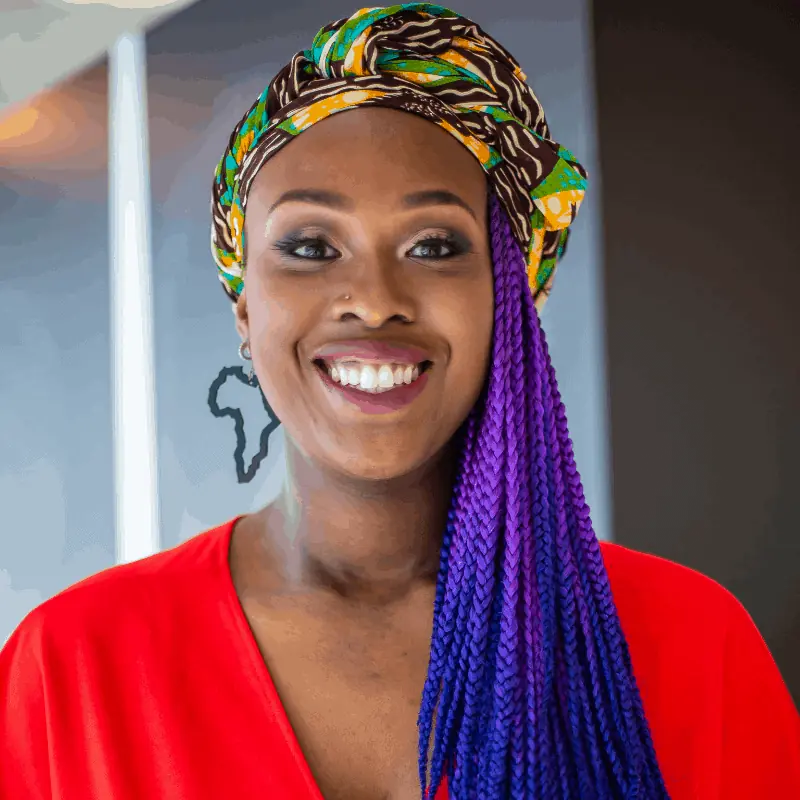There have been movements for the greater inclusion of women in the workforce for decades. And, indeed, great strides have been made. But is this too narrow of a measure for gender diversity? When we look at DEI (diversity, equity, and inclusion) initiatives, the goal is to capture everyone. For that reason, efforts to challenge gender diversity and broaden its definition are important and valuable.
Disclosure: This post contains affiliate links. If you click through and make a purchase, I’ll earn a commission, at no additional cost to you.
Challeging Gender Diversity
The panel discussion on challenging gender diversity is a part of the Amplify DEI Summit 2021, which took place in September. The goal of the summit was to equip leaders—both those in a formal leadership role and those who are self-leaders—to put DEI at the forefront of every workplace.
Discussing why gender diversity needs to be challenged and broadened in the workplace were our panelists:
- Peter Zerp, Supplier Inclusion & Diversity Program Lead at Accenture (He/Him);
- Ryker Knapp, Senior Learning and Development Specialist at Indeed (He/Him);
- Marjolijn Vlug, Career & Allyship Coach (She/Her);
- Sarah Cordivano, Associate Director of Global Diversity, Equity, and Inclusion at Springer Nature (She/Her).
Vivian Acquah, Inclusive Workplace Wellness Advocate (She/Her), moderated the conversation.
The panel discussed a number of important topics including what it means to broaden gender diversity, why it matters, and some practical steps for leaders to take.
Broadening gender diversity
The topic of this panel discussion was to challenge gender diversity. Part of this is to broaden its definition. Decades of effort and initiatives have made some significant advances in the representation of women in the workforce. But, as panelist Sarah Cordivano shared, “this is out of date,” because it is too narrow of a definition, and excludes people of other gender identities, including transgender or non-binary individuals.
Sarah called for leaders and organizations to step up and realize that only embracing the gender binary is not enough. There needs to be room for people of all genders and identities at the table so that everyone’s unique perspectives are included. Ryker Knapp put it this way, “there needs to be space for all.”
As the conversation around gender diversity continues, let’s remember to keep a broad, open definition of gender.
“So much of the narrative around diversity, in general, is around women and women in leadership… And it really feels like the main focus for a lot of companies, especially that are starting their DEI journey. And I think it’s unfortunate. We really need to challenge that because it’s way too narrow in terms of diversity, and in terms of binary gender, it really excludes other underrepresented gender identities. It also excludes, in many cases, women of color. This is out of date, honestly… We really need to think about how we can communicate around gender in the workplace that isn’t such a narrow lens.”
Sarah Cordivano
Why gender diversity matters
The answer to “why gender diversity matters” is obvious to many, especially our panelists. It’s obvious in that it matters because diversity matters. But there are companies that have not yet fully understood or embraced the impact that diversity has in their organizations. Here are some of the reasons our panelists shared as to why organizations need to care about gender diversity:
- Gender diversity brings increased innovation and growth to the workplace. If a workplace is only embracing one viewpoint, how can they innovate?
- Ignoring gender gaps causes real harm. Besides gaps in pay and position, there are other gender gaps that negatively affect certain groups. Panelist Peter Zerp discussed how many women do not have a good retirement plan because of their exclusion from the workforce. This is an often-unseen consequence, but needs to be brought to light and addressed.
- Embracing gender diversity helps with employee retention. When people are able to show up as their authentic selves and are valued in the workplace, they tend to stay in their jobs!
Practical steps for leaders
We’re all about practical steps here at Amplify DEI. It’s important to equip leaders with the “how” and not just theoretical discussions. So, the panelists had a lot to share about how leaders can take practical steps to activate gender diversity in their workplaces:
- Start small. Big changes can take time, so starting with the simple and “low-hanging fruit” can be very effective. For example, ensuring there are restrooms that any gender can use and feel comfortable in signals value and care. It’s not too challenging to implement, but makes a big difference to an employee looking for a safe place.
- Realize that you are always learning. There is no arrival point with DEI. Individuals and leaders have to take on a posture of continual learning and a growth mindset. Be okay with the discomfort that comes from challenging your beliefs and biases. As panelist Marjolijn Vlug shared, growth can be exciting, and leaders should start “enjoying that growth.”
- Recognize where you have influence—and use it. Some people have the privilege of sitting at the top, in positions of influence. Recognize when you are there and there are conversations happening around you that are not acceptable. Use your influence to shut those conversations down. Ryker Knapp shared with the panel that, while you can’t change people, you can absolutely take a stand and say, “in my presence, this type of conversation is not okay.”
- Think broadly. It is likely that you work with a variety of other companies or professionals external to your own organization. It’s possible to start focusing on DEI with those partners, as well. Peter Zerp shared his own companies “supplier inclusion” program, which seeks to procure from diverse companies. This is an example of how you can surround yourself with like-minded people and organizations, working together to amplify DEI in the workplace.
- Use data to learn and make changes. Data is such an amazing tool, especially when it comes to DEI. Sarah Cordivano encourages everyone to take the time to make changes to how you are collecting data. Small tweaks where employees can actually check their gender identity or share their pronouns is an important step first step to making sure everyone is visible and heard.
- Set bold targets. As a company, you can set bold targets on DEI initiatives and publish them, so that others hold you accountable to them. This is an important part of showing real commitment and follow-through to both employees and the general public.
- Recognize biases during the interview process. A lot of companies feel most comfortable hiring within their demographic. But, in doing so, you are not capturing the benefits of a more diverse workplace. So, be aware of your biases, especially during the hiring process to ensure you are hiring in an equitable manner.
Where we want to go
While a lot has been done over the years, there is still such a far way to go when it comes to gender diversity in the workplace. The hope is that leaders (formal and individuals who are self-leaders) will be inspired to take action on some of these practical tips. The panelists expressed some of their hopes for the future, daring to imagine what the year 2025 might look like with a concentrated effort in this DEI space.
One dream for the future is to have equal spaces for all people, and that diverse voices are normalized. Or, as host Vivian Acquah put it, “When you say you cater to or support diversity, equity, and inclusion, show the different colors of the rainbow.”
Ryker Knapp took it a step further in specifically challenging cisgender men to “see the beauty and benefit around elevating the voices of cis women, trans women, trans men, gender non-conforming, and non-binary folks.” He used the illustration that if cis men climbed up the ladder, they need to reach down and help others come up it as well. This is not to devalue their own experience or hard work, but simply to help others climb up the same ladder that was a little easier for them to do in the first place. It’s a beautiful picture of creating space at the table for all people.
Conclusion
There is work to do. Amplify DEI hopes that these panel discussions inspire and motivate leaders into action. If we work together, we can accomplish so much. It’s also important to stop and celebrate where we’ve come from, too. Celebrate the wins and acknowledge what positive change has already been done.
If you want to check out the full panel discussion, or any of the other amazing conversations from Amplify DEI, head on over to the website to sign up. Amplify DEI is the Netflix of DEI—a place to grow in knowledge as well as inspiration and motivation.
Latest Posts
- Activating Special Abilities and Embracing Neurodiversity in the Workplace
- How To Embrace Intersectionality in the Workplace
- 5 Essential Ingredients to Amplify Inclusive Leadership
- PRIDE in Practice: How and Why to Embrace Diversity, Equity, and Inclusion in the Workplace
- Let’s Talk About Racism In The Workplace Today
















